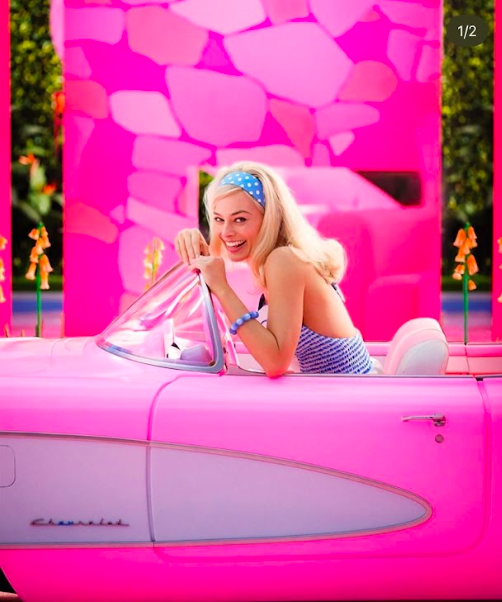Simply in the first 10 minutes of Greta Gerwig’s “Barbie,” as the audience is being introduced to the bright, cartoonish and surrealistic Barbie World, the film delivers extremely powerful messages about the way women act, are taught to act and expected to carry themselves in our world. Through imaginative storytelling and a sense of childlike wonder, the film shares deeply important and moving messages about the complexity of the human experience.
The camera floats through Barbie world, showing the audience the myriad of roles Barbie has, we see Barbies accepting awards. Instead of shrinking herself into, “I don’t deserve this,” she states, “I worked really hard for this and I deserve it.” Lawyer Barbie, played by Sharon Rooney, argues a case and defends it saying, “I have no difficulty holding logic and feeling at the same time. And it does not diminish my powers, it expands them.” This line holds so much power and is presented as a normal way of being. Here, Lawyer Barbie is celebrated for her full emotional capacity — it is not seen as a weakness, but rather supported as one of her strengths.
The film presents many lines of dialogue such as this one, matter of factly stating meaningful and extremely powerful ideas that gives women the chance to re-examine the way in which they exist in the world, what it feels like to express yourself, to be respected and the value of emotions.
Barbie’s position as a commercialized, plastic doll allows the writers to create characters that speak candidly and directly. Because Barbie was figuring out what it is like to be a woman in the Real World, she was able to have strikingly clear realizations, flipping preconceived notions and ideas about women and the way the world works on their heads. Whereas this might seem out of place or need to be hidden in a metaphor in a usual film, the artificiality of the Barbie World makes it fit right into place.
Gerwig, the director of the film, describes it as grounded in the look of 1950s sound stage musicals: “Wonderfully fake, but emotionally artificial spaces.” From the sets of Barbie World that combine real life objects and plastic — almost edible looking — set pieces, to the attention to detail in the color juxtaposing two worlds, to the commitment to truthfully expressing emotions, the film is intricately designed and artfully crafted.
Although the commerciality of the brand, Mattel, is a slightly jarring presence in the film, with moments of abrupt cuts to “commercial,” the film is still able to impart a heartfelt message.
I had to watch “Barbie” twice to catch and be able to absorb all of the messages that were presented and packed into the film. Throughout “Barbie,” Gerwig and the team that created the film explores what it means to be a woman, what it means to be human, the impacts of the patriarchy and everyone’s part in dismantling it.
The discussion around girlhood and what it means to grow into being a woman carries beyond the cinema and starts before audiences even see the film. Audience members dressing up in pink to watch the film indicates an important shift in embracing a color that has been seen as “too girly” or somehow a negative thing. This act of dressing in pink feels symbolic of re-embracing girlhood and not viewing this as a weakness.
The second time I went to see “Barbie” there were two older ladies sitting next to me (both wearing pink). Getting to experience the film together, realizing that many of the people in the audience had shared similar experiences and emotions — all of us being able to see ourselves on screen — resonated with audiences across multiple generations.





































































































































































































